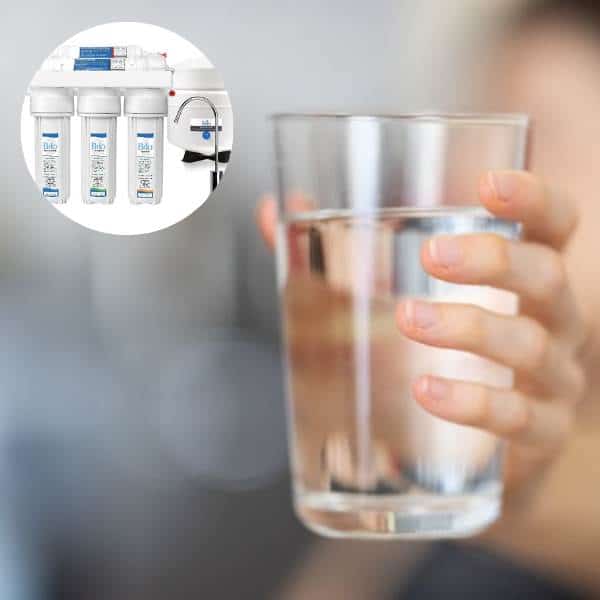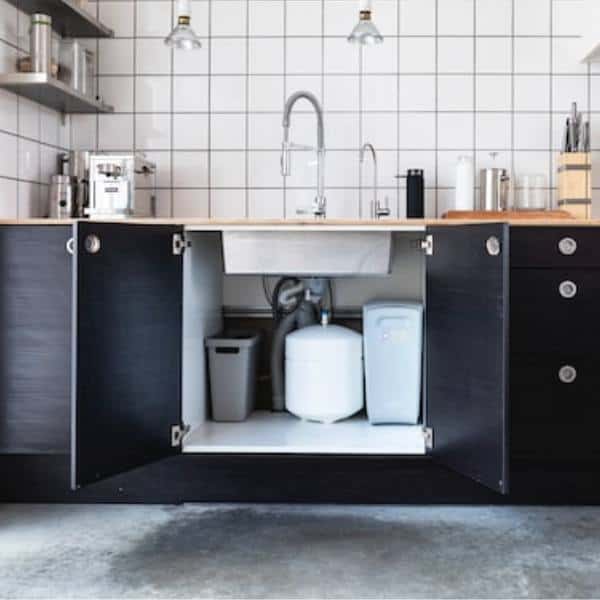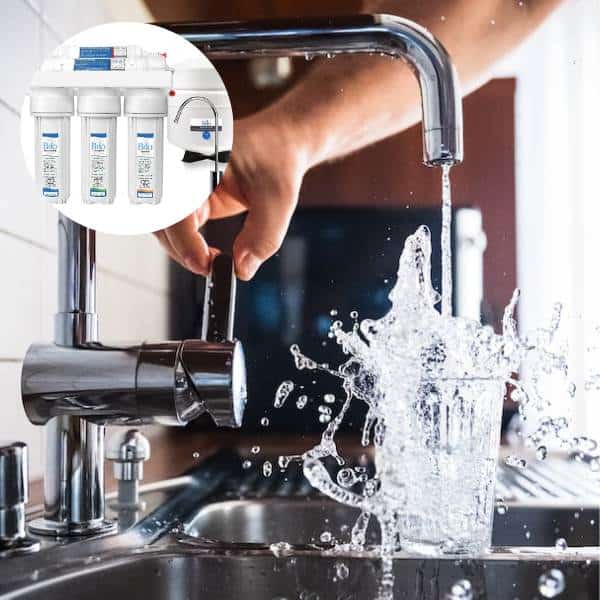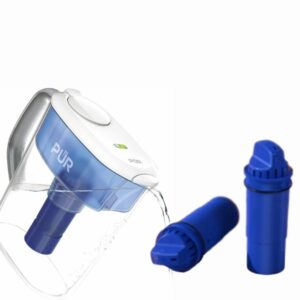6 Key Benefits of Reverse Osmosis
Reverse osmosis (RO) is a process that uses a semipermeable membrane that allows pure water to pass through but rejects water impurities. It is a popular choice for those looking to improve their drinking water quality, as it offers many advantages over other purification methods. These systems are very beneficial to use as there is a long list of contaminants removed by RO.
Here are some key benefits of reverse osmosis.
Better Tasting Drinking Water
Drinking water is essential for our health and well-being. However, the quality of drinking water varies widely from one source to another. Using reverse osmosis (RO) technology can help make sure you’re getting the best possible drinking water available.
Specifically, a 5-stage filtration RO system not only eliminates contaminants but polishes the water making it more palatable. Postfiltration using carbon filters removes any unsightly odors and taste of the water before it comes out of the faucet.

Reliable Method of Water Purification
Reverse Osmosis (RO) is an effective method of purifying water. In an RO system, the process is added with more filters to remove water contaminants efficiently. Typically, it has a sediment filter to remove larger particulates such as sand and silt. Carbon filters are also added to get rid of VOCs, chlorine, hydrogen sulfide, and even some pesticides.
The RO membrane then removes the contaminants that the prefilters cannot. It rejects impurities bigger than 0.0001 microns like microorganisms and those contaminants having monovalent ions like potassium and sodium.
The result is pure water free from heavy metals, nitrates, sulfates, pathogens, and other harmful contaminants that you can use directly from the tap.
More Energy Efficient than Distillation
The main benefit of reverse osmosis water system is that it is more energy efficient than distillation. Unlike distillation which uses a heating element, reverse osmosis systems solely rely on water pressure to function.
The water pressure forces the source water to the semi-permeable membrane that only allows pure water to pass through. The contaminants are left and comprise the brine which is then sent to the drain as wastewater.
Even with an electrically operated booster pump for homes with low water pressure, an RO system is more economical compared to a home distiller. This makes it an attractive option for those looking to purify their drinking water while still reducing their carbon footprint.

More Sustainable than Producing Bottled Water
The water bottling process requires fossil fuels to produce and transport. It even contributes to the increase of greenhouse gas concentrations in the atmosphere. Specifically, 2.5 million tons of carbon dioxide are released during the process increasing the earth’s temperature.
Furthermore, discarded plastic bottles create plastic waste which takes centuries to decompose and can clog waterways and harm wildlife when it enters natural ecosystems. To make matters worse, there are no strict regulations and implementation on how to discard end-of life-plastics.
RO systems offer an on-demand water supply and require very little energy compared with bottled water production.
More Economical than Buying Bottled Water
Drinking clean and healthy water is essential for maintaining good health but buying bottled water can become an expensive habit. Fortunately, there are more economical ways to acquire safe drinking water such as reverse osmosis (RO) systems.
The consumer pays the expenses involved in the production of water bottles—water filtration, packaging, shipping, and marketing. And so, pure water straight from the tap is a great deal for budget-minded households.
An RO system’s initial purchase price covers all components necessary for installation which includes the membrane filter, faucet, and storage tank. Once installed, ongoing maintenance costs are minimal as only periodic filter changes are required to keep the system running effectively.
Highly Effective in Treating Wastewater
The use of Reverse Osmosis (RO) as a water treatment technique has been in existence for many years, and its popularity shows no signs of waning. RO is highly effective at treating wastewater by removing particles, toxins, bacteria, and viruses from the water. It is also capable of removing dissolved salts, metals, and other impurities that can be hazardous to both human health and the environment.
RO works by forcing water through a membrane that contains tiny pores. These pores are too small for most contaminants to pass through, so they remain trapped on one side while clean water passes through to the other side. The contaminants are then discarded as waste sludge or sent back into the original source for further purification processes. This process makes it possible to achieve extremely high purity levels when treating wastewater with RO systems.

Is Filtered Water From Reverse Osmosis Good for You?
The reverse osmosis process involves pushing water through a fine membrane to remove impurities. As the demand for clean and safe drinking water continues to rise, so has the popularity of reverse osmosis systems. But is the safety of RO system reliable? The short answer is yes.
Reverse osmosis filtration systems are effective at removing chemicals, pollutants, and toxins from drinking water – up to 99% in some cases. This makes it an attractive option for people who prefer healthy water free from contaminants that are commonly present in untreated well water.
Additionally, reverse osmosis water filtration systems can remove fluoride from your drinking water, which some believe may have a negative effect on health if consumed in large amounts over time.
Is the Reverse Osmosis System Worth Buying?
Is the reverse osmosis system worth buying? Reverse osmosis offers one of the most effective means of filtering contaminants from water, but it also involves an investment in cost and time that must be weighed against potential benefits.
The primary benefit of using a reverse osmosis system is improved drinking water quality. These systems remove various contaminants such as lead, fluoride, chlorine, and other chemicals. They can also reduce bad odors and tastes caused by metal or sulfur content in your water supply.
Additionally, a reverse osmosis filtration system removes harmful microorganisms such as bacteria and viruses, making it a great choice if you’re concerned about pathogens in your source water.
Conclusion
In short, reverse osmosis is a highly efficient and cost-effective water filtration system that can provide clean, safe drinking water to homes, businesses, and communities. It can remove sediment, bacteria, heavy metals, viruses, and other dangerous contaminants from water supply sources.
Reverse osmosis requires little maintenance and is easy to operate. The benefits of reverse osmosis water include improved health, better-tasting food and beverages, a reduced environmental impact due to less chemical usage, and a more economical option than bottled water.

